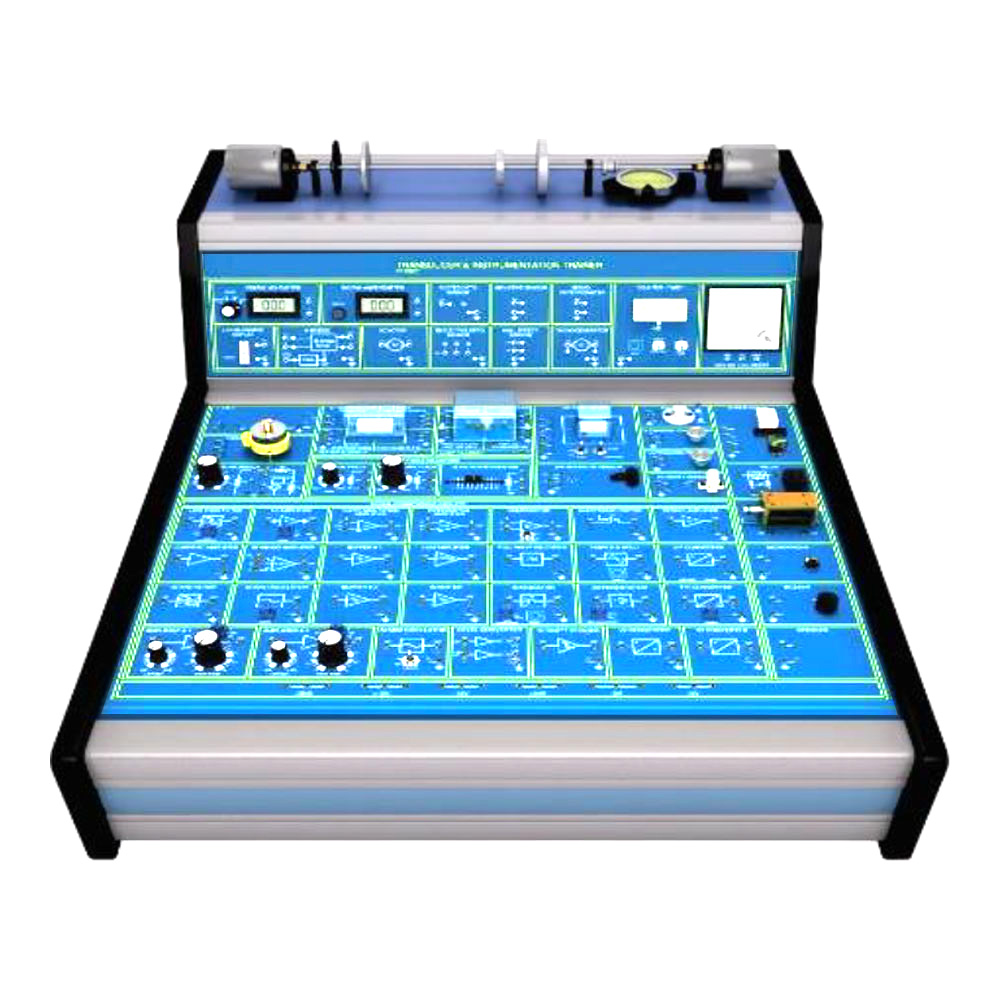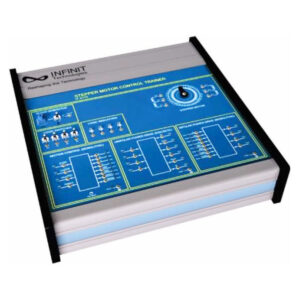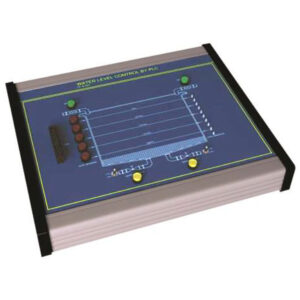The IT-5927 Transducers Instrumentation Trainer introduces students to input sensors output actuators signal conditioning circuits and display devices through a wide range of hands-on practical activities This self-contained trainer has all the necessary power supplies light sources and compressed air supplies to carry out the range of hands-on experimental work It is possible to build and test complete closed loop control systems for rotary speed and position making the trainer ideal for use in control engineering teaching The trainer is supplied with a detailed curriculum manual that provides background theory practical activities and student assessment questions The bench-mounted trainer features the following devices and circuits:
Experiments Included:
Basic Control Systems Equipment and Terms Used
- Study the difference between open loop and closed loop systems
- Expression for the overall gain of a negative feedback closed loop system
- Calculation of overall gain of a negative feedback closed loop system from given information
- Basic components of a closed loop system and explain their functions
- Meaning of terms associated with control system equipment
Positional Resistance Transducers
- Basic construction of rotary and slider variable resistors
- State that the resistance section may be either a carbon track or wirewound
- Characteristics of output voltage against variable control setting
- Comparison of a carbon track variable resistor to the wirewound type
Wheatstone Bridge Measurement
- Basics of Wheatstone Bridge circuit for resistance measurement.
- Describe the term “null balance”.
- Calculation of an unknown resistance from the Bridge values at balance
- Factors affecting the resolution and accuracy of measurements
- Discuss the reason for the three-wire resistance circuit
Temperature Measurement
- Characteristic of an IC temperature sensor
- Construction and characteristics of a platinum RTD resistance transducer
- Construction and characteristics of an NTC Thermistor
- Characteristic of NTC Thermistor bridge circuits
- Construction and characteristics of a Thermocouple
- Deduce temperatures from a voltage reading across a transducer
Light Sensors
- Characteristics of a filament lamp
- Construction and characteristics of a photovoltaic cell
- Construction and characteristics of a phototransistor
- Construction and characteristics of a photoconductive cell
- Construction and characteristics of a PIN photodiode
Linear Position or Force Applications
- Construction, principal and characteristics of a Linear Variable Differential Transformer (LVDT)
- Construction and Characteristics of a Linear Variable Capacitor
- Construction and Characteristics of a Strain Gauge
Environmental Measurements
- Construction and characteristics of an air flow transducer
- Construction and characteristics of an pressure transducer
- Construction and characteristics of a humidity transducer
Rotational Speed and Position Measurements
- Slotted Opto Transducers for Counting and Speed Measurement
- Reflective Opto Transducers and Gray Coded Disc for Position Measurement
- Inductive Transducers for Speed Measurement
- Hall Effect Transducers to Speed and Positional Measurement
- Construction, Principles and Application of a Tacho-Generator to Speed Measurement
Sound Measurements
- Construction and characteristics of a microphone
- Construction and characteristics of an ultrasonic receiver and transmitter
- Comparison of various methods of measuring sound signals
Sound Output
- Construction and characteristics of a moving coil Speaker
- Construction and characteristics of a buzzer
Linear or Rotational Motion
- Construction and characteristics of a DC solenoid
- Construction and characteristics of a DC relay
- Construction and characteristics of a DC solenoid air value
- Construction and characteristics of a DC permanent magnet motor
Display Devices
- Characteristics and application of the Timer/Counter
- Characteristics and application of the LED Bargraph display
- Characteristics and application of the Moving Coil Meter
- Calculate the requirement to extend the voltage range of a Moving Coil Meter
- Selection of a suitable device for a particular voltage measurement
Signal Conditioning Amplifier
- Characteristics and application of DC amplifiers
- The term “Offset” and the need for offset control
- Characteristics and application of an AC amplifier
- Characteristics and application of a power amplifier
- Characteristics and application of a current amplifier
- Characteristics and application of a buffer amplifier
- Characteristics and application of an inverter amplifier
- Characteristics and application of a differential amplifier
Comparators, Oscillators and Filters
- Characteristics of a comparator
- Effect of hysteresis on the operation of a comparator
- Characteristics of an alarm oscillator
- The term “latch” applied to an alarm oscillator
- Characteristics of an electronic switch
- Characteristics of a 40KHz oscillator
- Characteristics of band pass filters
- Characteristics of low pass filters
Mathematical Operations using OP AMPS
- Characteristics of a summing amplifier
- Characteristics of an integrator
- Characteristics of a differentiator
- Characteristics and application of a “sample and hold” circuit
Control Systems Characteristics
- Characteristics of an ON/OFF system
- Characteristics of a Proportional system
- Characteristics of an Integral system
- Characteristics of a Derivative system
- Practical system 3-term (or PID) controller
Practical Control Systems
- Characteristics of an ON/OFF temperature control system
- Characteristics of a light controlled ON-OFF system
- Characteristics of a positional control system having:
-
- Proportional
- Proportional + integral
- Proportional + derivative
- Proportional + integral + derivative control
- Characteristics of a speed control system




